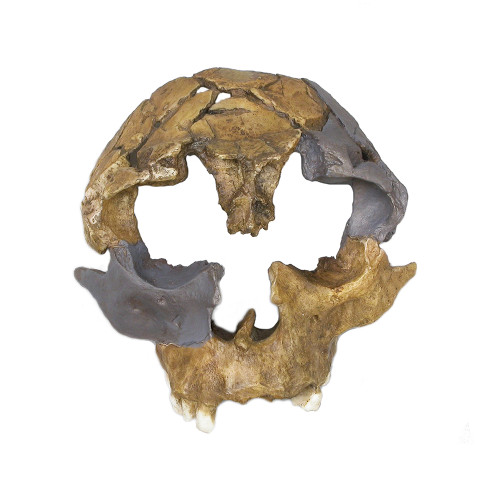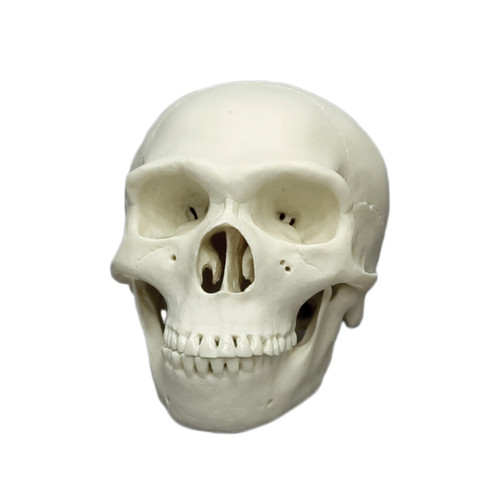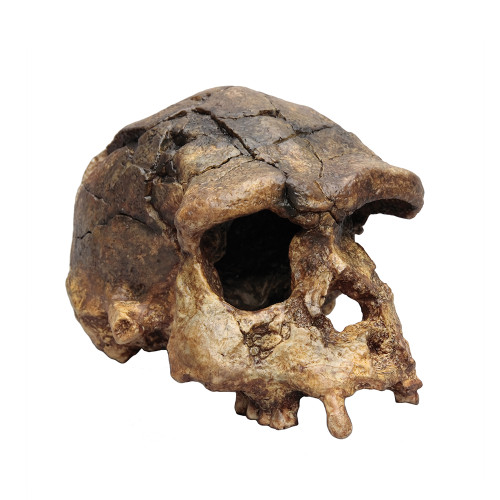Homo antecessor skull (800,000 years).
The Homo antecessor skull was discovered in 1995 by J. M. Bermudez de Castro at the Gran Dolina site, in Atapuerca, Spain, and described in Science in 1997.
Before the discovery of Homo antecessor, there was no substantial evidence of hominids in Europe before about 0.5 MYA.
Fossils and stone tools at least 780,000 years old were found at the Gran Dolina site in Atapuerca.
Homo antecessor (Latin: human forbear) possessed characteristics of both Neanderthals and Homo sapiens.
With the bulky brow and big jaw of the now extinct Neanderthal and the cheekbones and nose of Homo sapiens, the researchers believe they have discovered a missing link that may cause a major reconsideration of human ancestry.
Notably, its brow ridges are double-arched (as is the case with Neanderthals), and its molars triple-rooted, a trait most closely recognised in Homo ergaster.
As expected of a Homo specimen from this time period, it has a brain size of over 1,000cm3.
The more modern midfacial characteristics of Homo antecessor have previously only been seen in hominids more than half a million years younger.
In other respects it more closely resembles Homo ergaster, an early form of Homo erectus from Africa.
Notes:
- A stand is available by enquiry, sold separately







